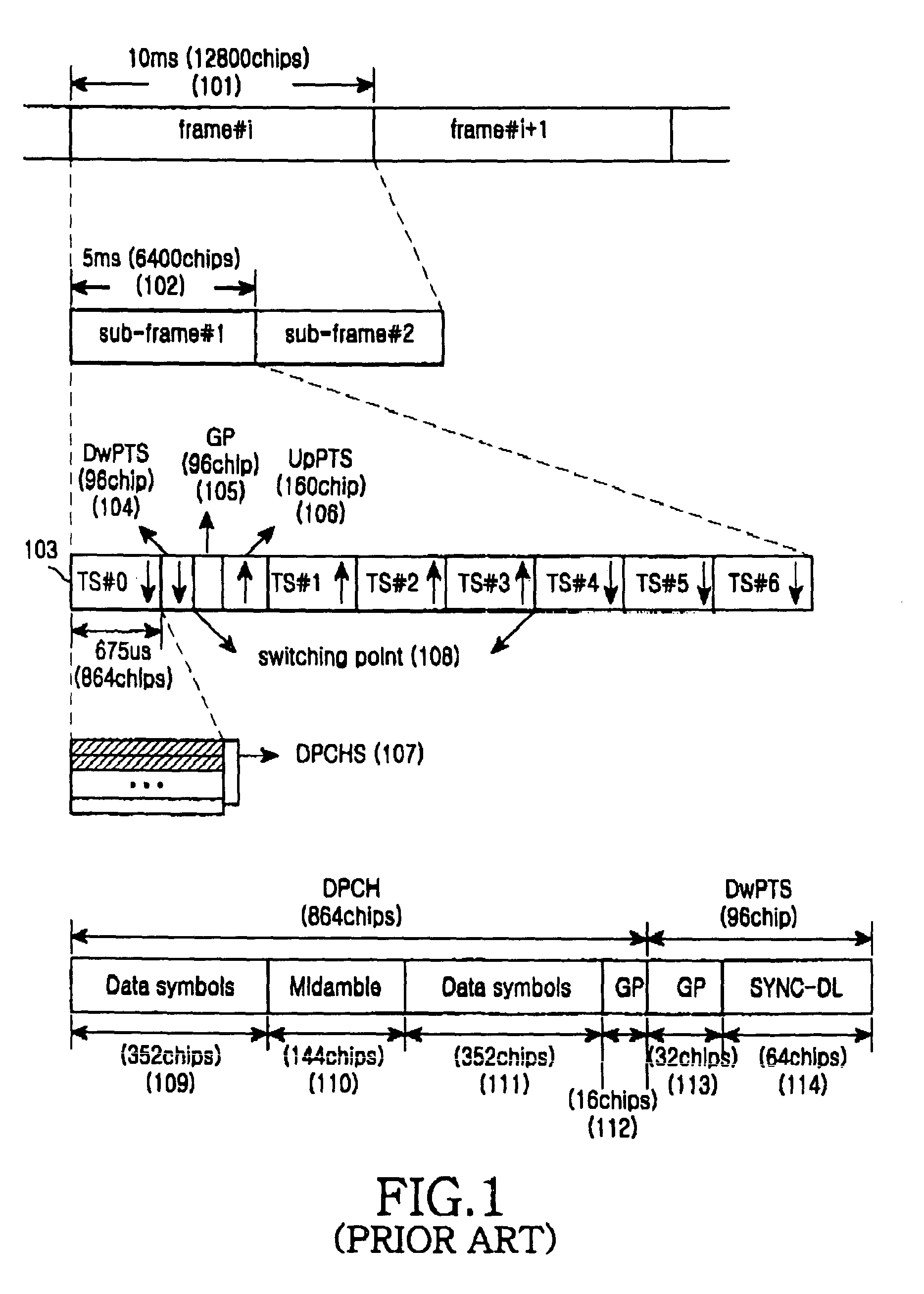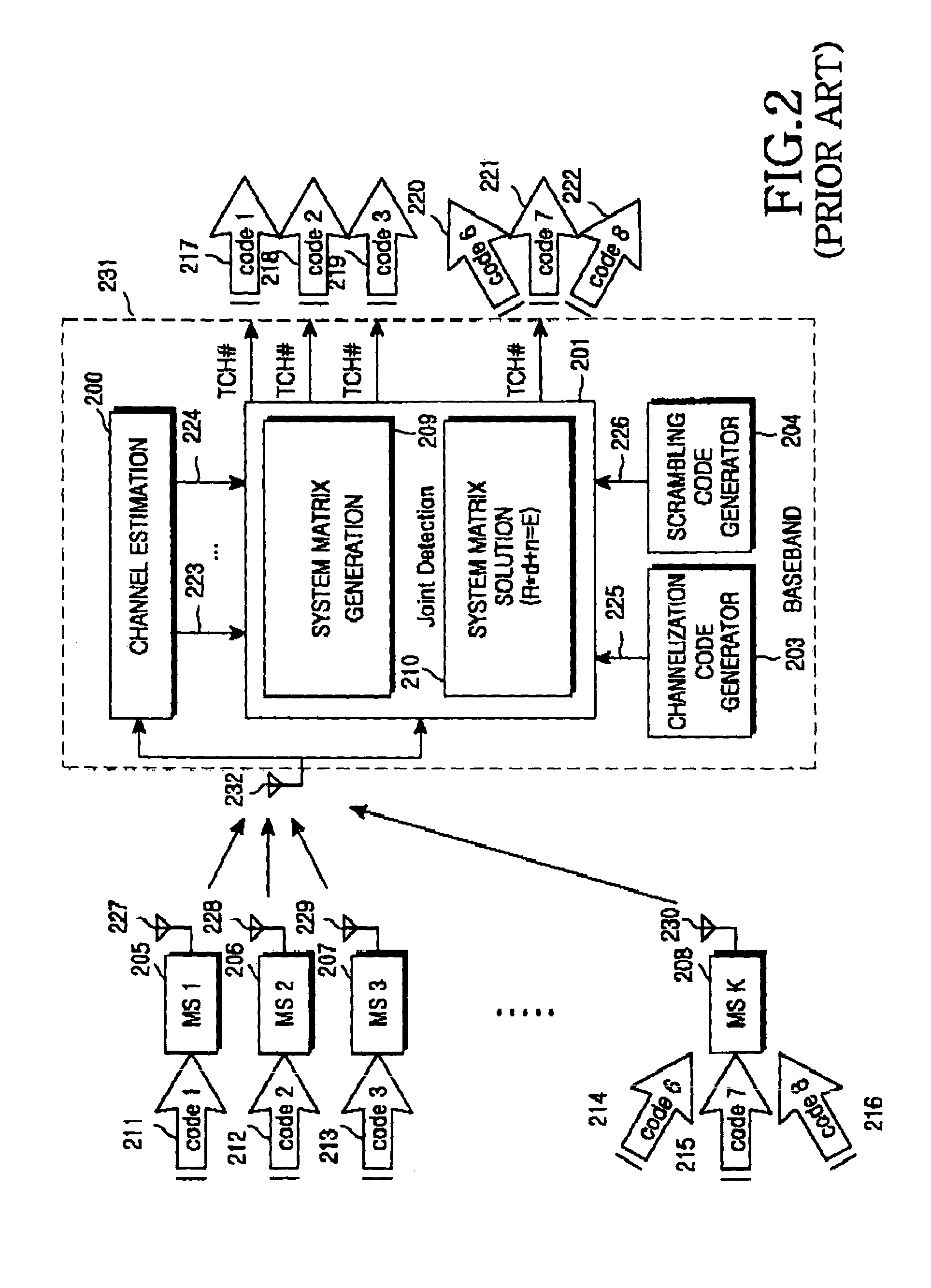Apparatus and method for joint detection receiving irrespective of orthogonal code length in mobile communication system
a mobile communication system and code length technology, applied in orthogonal multiplex, electrical apparatus, radio transmission, etc., can solve the problems of multi-path signals, ineffective resistance to mai, and gp having a short period of time may be seriously affected by signal interferen
- Summary
- Abstract
- Description
- Claims
- Application Information
AI Technical Summary
Benefits of technology
Problems solved by technology
Method used
Image
Examples
Embodiment Construction
[0072]Preferred embodiments of the present invention will be described in detail herein below with reference to the annexed drawings. In the drawings, the same or similar elements are denoted by the same reference numerals even though they are depicted in different drawings. In the following description, a detailed description of known functions and configurations incorporated herein will be omitted when it may make the subject matter of the present invention rather unclear.
[0073]Although an NB-TDD communication scheme is used for the present invention as an example, for the convenience of description, it should be understood that its description does not restrict the scope and spirit of the invention.
[0074]A burst-synchronous CDMA communication system such as a TD-CDMA communication system uses a burst to perform two-way communications.
[0075]The joint detection receiver illustrated in FIG. 2 calculates channel responses of all the received signals, and uses a joint detection method...
PUM
 Login to View More
Login to View More Abstract
Description
Claims
Application Information
 Login to View More
Login to View More - R&D
- Intellectual Property
- Life Sciences
- Materials
- Tech Scout
- Unparalleled Data Quality
- Higher Quality Content
- 60% Fewer Hallucinations
Browse by: Latest US Patents, China's latest patents, Technical Efficacy Thesaurus, Application Domain, Technology Topic, Popular Technical Reports.
© 2025 PatSnap. All rights reserved.Legal|Privacy policy|Modern Slavery Act Transparency Statement|Sitemap|About US| Contact US: help@patsnap.com



